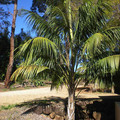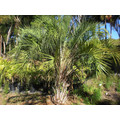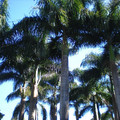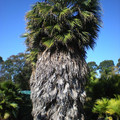Pollination, which may be loosely defined as the depositing of pollen to ensure plant fertilization, is a crucial factor in the growth and wholesale of plants in Australia. However, due to several unique geological qualities, as well as the presence of unique wildlife, the entire process has become somewhat more complex. These reasons will be explored shortly in the article to follow.
Geological stability is the defining factor of Australia's unique fauna and flora. Unlike neighbouring New Zealand, which was shaped by massive geological upheavals, geologists estimate that the geological make up of the continent has remained the same for approximately 80 million years. This unparalleled stability has led to very distinctive soil types, which in turn has allowed for the growth and development of some of the world's most amazing plant life.
In directly causal fashion, animals developed alongside these special plants to take advantage of the food on offer. Australia is world renowned for one-of-a-kind animals, from kangaroos to koalas. And these animals are, in general, responsible for pollination of plants. Although it is true that some plants have developed bisexual methods of what is essentially self-pollination, the animal vectors are the favored reproductive strategies for most plants.
Whilst all of this localized diversity is a pleasure to Australian residents and a source of national pride, it has undoubtedly led to issues regarding the pollination of plants, particularly in the commercial sector. While new developments in the engineering of customized hybrid plants have led to some beautiful new flowers, the natural role of flowers in particular has diminished.
Flowers serve as advertisements to potential pollinators. As a reward for their visiting the flower, they would receive pollen and nectar. However, engineered plants lack the rewards that natural plants offer, and so potential pollinators are not as attracted. Once again, the domino effect of such a problem is fairly self-evident - no pollinators leads to no new pollination, which leads to diminished growth patterns and ultimately, extinction of the species of plant and insect.
Another area of concern, particularly in Australia, is the decreasing number of certain key bat and bird species. Birds in particular spread seed over vast distances via their droppings, allowing plant species to reach out over larger geographical sights. Bats spread seed in much the same way, as they are attracted to very specific, strong-smelling plants which flower at night.
Their droppings help to spread the seed of such plants. However, increasing areas of destruction for agriculture and housing lead to the elimination of these types of plants. Several animals, such as possums and specific kinds of beetles native to Australia, are facing extinction as their habitat shrinks on a daily basis.
In much the same way as the genetic flower hybrids are leading to a subtle slowing in the efficacy of certain key pollinators, widespread destruction of key ecosystems is literally forcing pollinators to adapt to new conditions which they simply cannot cope with.
The situation does indeed seem dire. Unique geological conditions have given rise to native animals with highly evolved pollination strategies, but due to human ingenuity and simultaneous carelessness, this balance is being threatened.
Studies in Argentina, America and England have suggested that the life cycle of bees has been affected by similar issues to the point where their numbers have decreased by as much as 50% in just 20 years. Feral honeybees (Apis mellifera) are threatening native bees, which has a direct and severe impact on plant pollination.
There is hope for the future if commercial plant dealers and farming communities co-operate with government in order to try and slow these worrying trends. Australia is recognized for forward thinking regarding the preservation of local flora and fauna via botanical gardens and reserves, but this pride needs to be instilled in every citizen.
Legislation to protect larger plants such as palms also needs to be passed to ensure that some of Australia's amazingly well-adapted wildlife will always have a home. And commercial plant dealers may have to take a step back with genetic development and do things the traditional way - pollinating plants themselves until nature's pollinators are able to do the job themselves.
Something as simple as a paintbrush may be used to ensure successful reproduction of plants. In an industry that is proudly selling natural, indigenous plants and products, many believe that a simple return to traditional techniques will help Australia to correct its natural balance and continue to prosper and grow as a bastion of flora and fauna.
<< Previous Palms:Sun, Water and Soil | Back to Mullumbimby Palm Blog | Next >> Protecting the Australian Environment



